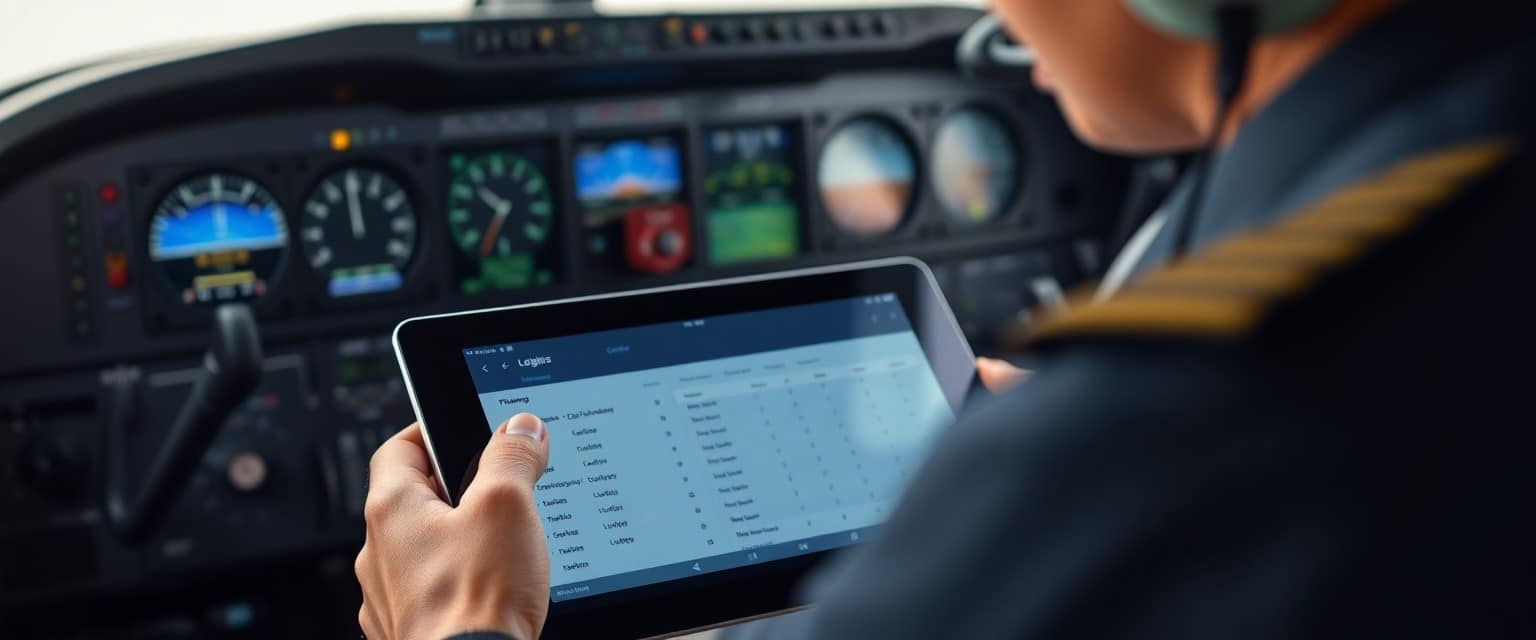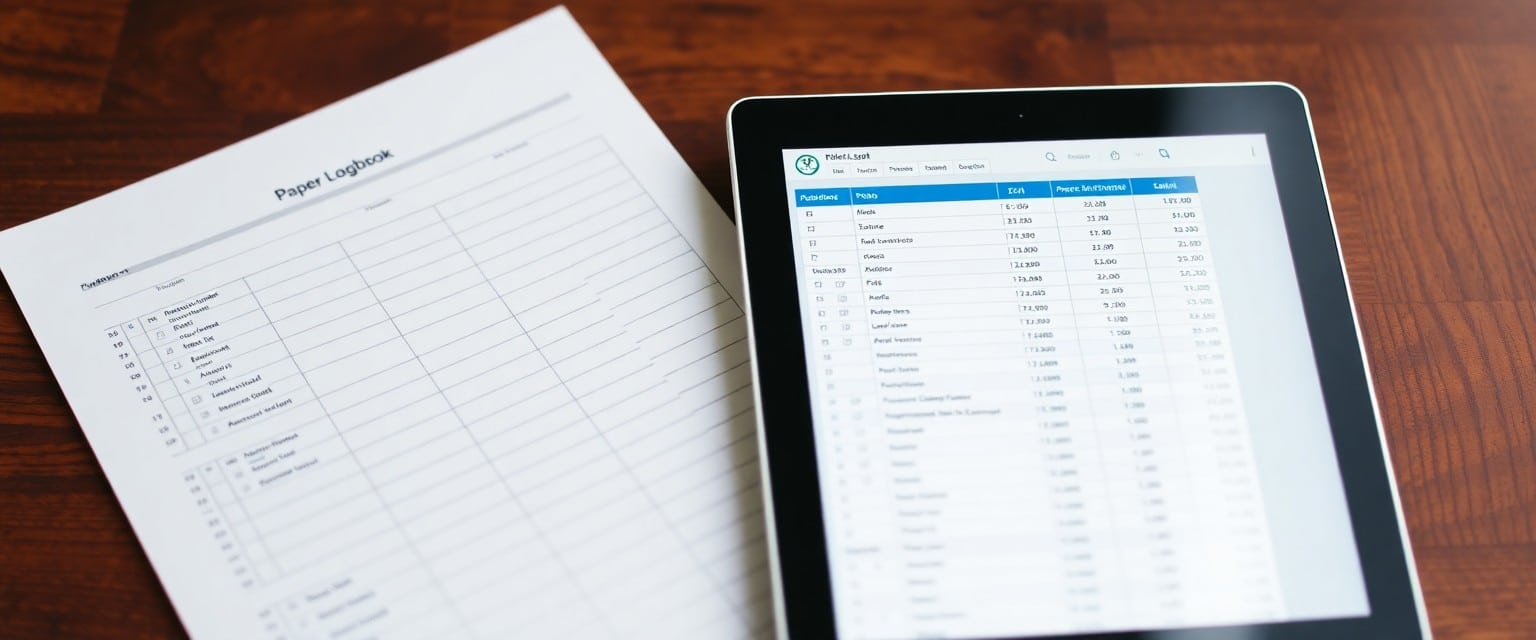Tips & Tricks
Pilot Logbook Tips: Best Practices for Accuracy and Compliance
Your pilot logbook serves as the official record of your aviation career, making accurate documentation imperative for regulatory compliance and professional advancement. As a pilot, you need to maintain meticulous records that meet both FAA requirements and industry standards. Whether you’re transitioning from paper to digital formats or establishing a new logging system, proper entry procedures can protect your career and prevent costly violations. This guide will help you navigate common logbook challenges and implement proven strategies to ensure your flight records remain audit-ready and professionally maintained.
Top 5 Pilot Logbook Tips for Accuracy
- Log Flights Immediately: Avoid memory-based errors by entering flight data right after landing.
- Use Digital Tools: Consider logbook apps like LogTen, MCC PilotLog, or ForeFlight.
- Stay Consistent: Use the same formatting and abbreviations throughout your entries.
- Backup Regularly: Cloud-sync your digital logs and scan paper logbooks for redundancy.
- Cross-Check Totals: Reconcile flight times with simulator sessions, dispatch records, or training files.
Zeroing in on Accuracy: Crafting Your Logbook with Precision
Precision in logbook documentation directly impacts your aviation career trajectory and regulatory compliance. Your entries serve as the official record of your flight experience, determining qualification for certificates, ratings, and insurance requirements. Each flight record becomes part of your professional footprint, potentially scrutinized during job applications, accident investigations, or regulatory audits.
The Importance of Detail: Why Every Entry Matters
Your logbook tells the story of your aviation journey through specific, verifiable data points. Recording exact times, routes, aircraft details, and flight conditions creates a comprehensive picture of your experience. These details prove invaluable when applying for advanced ratings, demonstrating currency requirements, or validating your qualifications for potential employers.
Common Pitfalls: Errors to Avoid in Flight Logging
Pilots frequently encounter documentation challenges that can compromise logbook integrity. Missing instrument approaches, incorrect time calculations, and incomplete endorsements top the list of common mistakes. Mathematical errors in flight time totals and unclear distinction between PIC and SIC time can trigger regulatory red flags during audits.

Digital vs. Traditional: Choosing the Right Logbook Format
The choice between digital and paper logbooks shapes your entire flight documentation strategy. Digital formats offer automated calculations, cloud backup, and instant accessibility, while traditional paper logs provide tangible records and independence from technology. Your operating environment, regulatory requirements, and personal workflow preferences should guide this decision. Many professional pilots maintain both formats – using digital for daily entries while keeping paper backups for licensing and verification purposes.
Evaluating Digital Logbook Apps: Features That Matter
Modern logbook apps must deliver specific capabilities to merit your investment. Look for automatic flight time calculations, currency tracking, and endorsement management. Top-tier applications offer offline functionality, data export options, and compatibility with multiple regulatory frameworks. Your selected app should integrate with scheduling software and provide detailed reports for flight reviews and certificate applications. Popular options like ForeFlight and LogTen Pro have established track records with major airlines and flight schools.
The Case for Paper Logs: When Going Analog Works
Paper logbooks remain relevant in specific scenarios where simplicity and reliability take precedence. Traditional logs excel during initial flight training, bush flying operations, and in regions with limited internet connectivity. Physical logbooks never crash, require no charging, and provide immediate access during ramp checks. Many flight schools and examining authorities still prefer reviewing paper records during checkrides and practical tests.
Consider maintaining a paper logbook as your primary record if you frequently operate in remote locations or train student pilots. The tangible nature of handwritten entries creates a permanent archive that withstands technological changes. FAA inspectors and DPEs often express greater confidence in paper logs due to their tamper-evident nature and historical acceptance. Your paper logbook serves as a reliable backup during electronic system failures or when transitioning between digital platforms.
Regulatory Compliance: Navigating the FAA and EASA Maze
Understanding Regulatory Standards: The FAA Perspective
The FAA requires your logbook to contain specific flight details including date, aircraft make and model, aircraft identification, flight conditions, and types of piloting time. Your entries must be recorded no later than 7 days after each flight, maintaining records for at least 3 years. Digital logbooks must meet the same standards as paper records, with proper backup systems in place. The FAA accepts electronic signatures, provided they comply with Part 61.51 requirements.
EASA Requirements: Ensuring International Compliance
EASA regulations demand more detailed documentation compared to FAA standards. Your logbook must include precise flight times, duty periods, and rest times. EASA mandates recording take-offs, landings, and specific training exercises. Multi-crew time logging requires clear distinction between Pilot Flying (PF) and Pilot Monitoring (PM) roles.
When operating under EASA jurisdiction, your logbook needs to follow FCL.050 specifications, including standardized formatting and mandatory cross-border validation. European operators typically require additional details such as sector routes, simulator sessions, and line training documentation. Digital logbooks must meet EASA’s electronic record-keeping requirements, including robust data protection measures and regular backup protocols. Multi-license holders should maintain separate sections for FAA and EASA operations to simplify audits.
Pro Tips for Maintenance and Review: Staying Audit-Ready
Regular maintenance of your logbook safeguards against compliance issues and ensures smooth audits. Schedule monthly reviews to verify flight time calculations, cross-check endorsements, and update currency requirements. Keep digital backups of all entries and supporting documents in a secure cloud storage system. Maintain a separate checklist for recurring certifications and rating expiration dates. Recognizing potential discrepancies early prevents complications during official inspections.
Regular Logbook Audits: How to Conduct Your Own
Conduct quarterly self-audits using a systematic approach. Review your entries against source documents like flight manifests and scheduling records. Compare total times across categories, verify proper endorsement formats, and check currency calculations. Create a verification checklist covering necessary elements like aircraft type ratings, medical certification dates, and instrument approaches.
Building a Review Process: Keeping Your Entries Fresh and Accurate
Establish a consistent review routine by dedicating specific days each month for logbook maintenance. Use a three-step verification process: immediate post-flight entry, 24-hour review, and monthly reconciliation. Document any corrections with proper strike-through methods and authorized signatures.
Your review process should incorporate both short-term and long-term validation methods. Weekly checks focus on recent flight details, while monthly reviews examine broader patterns and cumulative totals. Implement a cross-reference system between your logbook and aircraft records to maintain data integrity. Set calendar reminders for checking currency requirements and certification deadlines. This layered approach ensures comprehensive accuracy while minimizing the time spent on administrative tasks.
The Evolution of Pilot Logbooks: What’s Next?
Trends in Logbook Technology: Looking Ahead
Digital logbook solutions are rapidly advancing with artificial intelligence and machine learning capabilities. These innovations will automate flight time calculations, detect potential errors, and seamlessly integrate with aircraft systems. You’ll see enhanced features like real-time synchronization across devices, automated weather data incorporation, and blockchain technology ensuring tamper-proof records. The next generation of logbook apps will likely include augmented reality displays of your flight routes and advanced analytics to track your professional development.
The Future of Compliance and Record Keeping: Regulatory Changes on the Horizon
Aviation authorities worldwide are moving toward standardized digital record-keeping requirements. The FAA and EASA are developing new frameworks for electronic logbook validation, while implementing stricter data security protocols. You can expect updated regulations focusing on digital signatures, cloud storage requirements, and cross-border record compatibility. These changes aim to streamline auditing processes and enhance global pilot certification verification.

To wrap up
The proper maintenance of your pilot logbook directly impacts your aviation career and regulatory compliance. By implementing these best practices, you’ll ensure your flight records remain accurate, organized, and audit-ready. Making timely entries, double-checking your calculations, and backing up your data will help you maintain professional standards throughout your flying journey. Whether you choose digital or paper formats, your consistent attention to detail in logbook management will serve as a valuable asset for your career advancement and regulatory requirements.
Frequently Asked Questions About Pilot Logbooks
What should be included in a pilot logbook?
A pilot logbook should record flight times (total, PIC, dual, night, instrument), aircraft types, registration, route, and flight conditions. It must also include endorsements and instructor signatures if required.
Is a digital logbook accepted by the FAA or EASA?
Yes. Both FAA and EASA accept digital logbooks, provided they are accurate, backed up, and auditable. Many airline recruiters now prefer digital formats for their clarity and ease of verification.
How can I prevent logbook errors?
To avoid logbook errors, log flights immediately, double-check entries, use standardized abbreviations, and cross-reference flight tracking tools like ForeFlight or Garmin Pilot.
What happens if there’s a discrepancy during an airline logbook review?
Discrepancies may raise red flags during recruitment. Always keep flight records consistent across platforms and be ready to explain anomalies with backup data or dispatch logs.
How long should pilots keep their logbooks?
Indefinitely. Logbooks serve as lifetime proof of flight experience and are essential for insurance, job applications, and legal matters—even after retirement.

